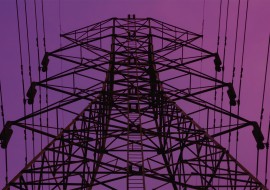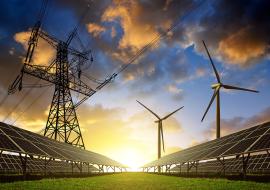Evaluation, measurement, and verification (EM&V) are the practices used to assess the performance of energy efficiency programs. Utilities and regulatory commissions rely on evaluation results to guide decisions on energy efficiency and other demand-side programs, such as which programs to offer and how much to spend on them. Utility regulators or other types of oversight bodies generally require such programs to be cost-effective, that is, the benefits must be greater than costs.
A fundamental challenge for EM&V is that energy savings from improved energy efficiency cannot be directly measured. Evaluators must estimate energy savings from counterfactual estimates of the energy that would have been used absent the energy efficiency measure taken by a customer participating in a program.
Energy efficiency program EM&V serves three critical objectives:
-
Accountability of the impacts: Did the program deliver its estimated benefits? EM&V activities document and measure the effects of a program and determine whether the program met its goals, such as energy and demand savings, emissions impacts, or metrics for participation. In some states such estimates of program impacts are tied to financial incentives for utilities or other program administrators.
-
Risk management to support energy resource planning: How certain are these savings? Risk refers to the uncertainty of the realization of expected savings from an efficiency project or program. Regulators and utilities need confidence that energy efficiency programs are yielding projected savings or, if not, what adjustments may be necessary. Certainty of savings is critical for guiding utility investments in energy efficiency and avoiding possibly more costly investments in supply resources, such as new generation plants.
-
Continuous improvement: What can be done to improve program performance in the future? EM&V activities seek to understand why a program had the effect that it did, with an eye for both improving existing programs and estimating savings from planned programs.
EM&V Practices
There are three primary types of evaluations:
-
Impact evaluations estimate program impacts, primarily energy savings (in kWh or therms) and demand savings (kW), but increasingly they also look at other types of impacts, such as emissions reductions or other nonenergy benefits. Impact evaluations provide inputs to estimate cost-effectiveness.
-
Process evaluations assess qualitative aspects of energy efficiency programs, such as their design, implementation, communications, and customer experience.
-
Market evaluations analyze market data, structure, and functions to gain insight into baseline performance and impacts resulting from policies, programs, and other initiatives designed to increase the share of energy-efficient products, technologies, or services.
Program evaluators rely on widely accepted methods, data, and algorithms to estimate savings—increasingly documented and required in state guidelines for program evaluation called technical reference (or resource) manuals, although they also draw on national databases and EM&V guides. While evaluation practices may vary widely, program evaluation is solidly grounded in a set of core principles that include transparency, objectivity, and accuracy.
Highlighted Resources
Energy Efficiency Program Impact Evaluation Guide from 2012 prepared by the State and Local Energy Efficiency Action Network, which is co-facilitated by the US Department of Energy and Environmental Protection Agency.
Contact Info
For more information or to contact a researcher, please visit the utilities program.








